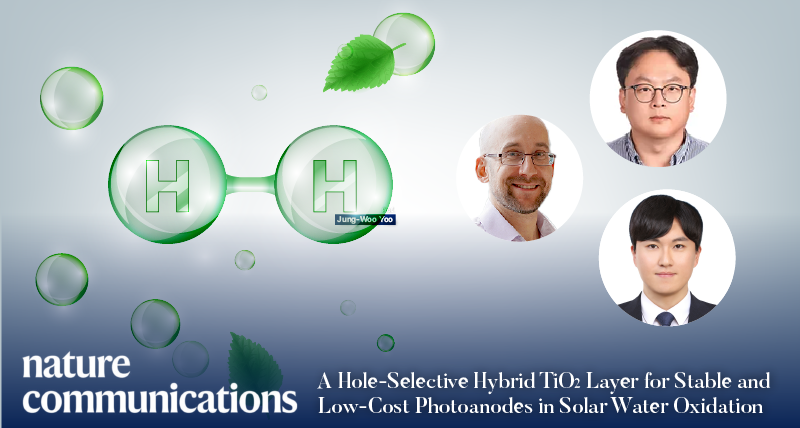The commercialization of solar green hydrogen production technology is nearing realization, thanks to the development of a novel protective material that significantly enhances the longevity of photoelectrodes, the key component of the technology.
Professor Jungki Ryu from the School of Energy and Chemical Engineering at UNIST, in collaboration with Professor David Tilley from the University of Zurich (UZH) in Switzerland, has created a protective layer that substantially improves the durability of metal oxide-based photoelectrodes used in solar hydrogen production.
Photovoltaic hydrogen production harnesses sunlight to generate hydrogen through the electrochemical decomposition of water. This process relies on a photoelectrode, which absorbs solar energy to drive reactions that split water molecules into hydrogen and oxygen. Specifically, when sunlight illuminates the photoelectrode, it triggers electrochemical reactions that facilitate the separation of water into its constituent elements, ultimately producing hydrogen gas.
However, a major challenge with this technology is the corrosion of photoelectrodes during water oxidation, highlighting the critical need for effective protective materials prior to commercialization. While metal oxide-based photoelectrodes are cost-effective, progress in their development lagged due to the absence of suitable protective layers.
The research team has addressed this challenge by incorporating polyethyleneimine polymer (PEI) into titanium dioxide (TiO2), traditionally used to protect costly semiconductor photoelectrodes. This innovative protective layer effectively blocks electrons—negatively charged particles generated by light absorption—while selectively allowing holes—positively charged particles—to facilitate water oxidation reactions, thus enhancing photoanodes performance and preventing corrosion.
When applied to BiVO4 photoanodes, the newly developed protective layer enabled stable water decomposition reactions for over 400 hours at a high current density of 2.03 mA/cm². This represents a significant improvement in stability compared to the performance deterioration observed in photoelectrodes without protective layers, which typically fail within 5 hours. Current density serves as an indicator of photoelectrode efficiency.
Furthermore, this advanced protective layer is versatile and can be utilized with various metal oxide-based photoelectrodes, including iron oxide (Fe2O3).
Professor Ryu commented, “This study represents a significant breakthrough in developing low-cost, high-stability solar water decomposition technology. It is expected to facilitate advancements in other photoelectrochemical cells that produce high-value resources from solar energy.”
The findings of this research have been published in the November 2024 issue of Nature Communications, with Dr. Sanghyun Bae from UZH as the lead author, along with contributions from Dr. Minjung Kim and Dr. Yuri Choi from UNIST. The study was also supported by the Swiss National Science Foundation (SNSF) and the National Research Foundation of Korea (NRF).
Journal Reference
Sanghyun Bae, Thomas Moehl, Erin Service, et al., “A hole-selective hybrid TiO2 layer for stable and low-cost photoanodes in solar water oxidation,” Nat. Commun., (2024).












